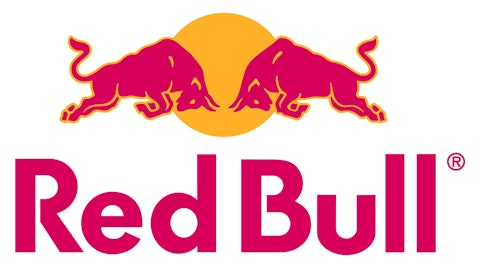PepsiCo, Inc. (NASDAQ:PEP) Q4 2022 Earnings Call Transcript February 9, 2023
Operator: Good morning, and welcome to PepsiCo’s 2022 Fourth Quarter Earnings Question-and-Answer session. Today’s call is being recorded and will be archived at www.pepsico.com. It is now my pleasure to introduce Mr. Ravi Pamnani, Senior Vice President of Investor Relations. Mr. Pamnani, you may begin.

Photo by Ja San Miguel on Unsplash
Ravi Pamnani: Thank you, operator and good morning everyone. I hope everyone has had a chance this morning to review our press release and prepared remarks both of which are available on our website. Before we begin, please take note of our cautionary statement. We may make forward-looking statements on today’s call, including about our business and plans and 2023 guidance. Forward-looking statements inherently involve risks and uncertainties and only reflect our view as of today, February 09, 2023, and we are under no obligation to update. As a reminder, PepsiCo’s fourth quarter 2022 includes 17 weeks of results. And our fiscal 2022 year includes 53 weeks of results. When discussing our results, we refer to non-GAAP measures, which exclude certain items from reported results.
Please refer to our Q4 2022 earnings release and 2022 Form 10-K available on pepsico.com for definitions and reconciliations of non-GAAP measures and additional information regarding our results, including a discussion of factors that could cause actual results to materially differ from forward-looking statements. Joining me today are PepsiCo’s Chairman and CEO, Ramon Laguarta; and PepsiCo’s Vice Chairman and CFO, Hugh Johnston. We ask that you please limit yourself to one question. And with that, I will turn it over to the operator for the first question.
See also 12 NASDAQ Penny Stocks Under 10 Cents and 10 Most Advanced Countries in Battery Technology.
Q&A Session
Follow Pepsico Inc (NASDAQ:PEP)
Follow Pepsico Inc (NASDAQ:PEP)
Operator: Our first question comes from Dara Mohsenian with Morgan Stanley. Your line is open.
Dara Mohsenian: Hey good morning guys.
Ramon Laguarta: Good morning, Dara.
Dara Mohsenian: So I just want to focus on the 2023 topline growth outlook after another very strong quarter here in Q4. Can you just give us a quick update on the business so far in 2023, given there are some concerns around macros and the consumer? Are you seeing momentum continue or any signs of incremental consumer weakness? And then second, how does that translate the price mix? Obviously, very strong pricing in Q4. In theory there is need for more pricing given the continued cost pressures in 2023, but as I just mentioned there are some worries around the consumer and the theory for retailer pushed out, so just help us understand within that organic sales growth outlook how much is price mix? Are you — is a lot of that carryover pricing from 2022? Or are you assuming more pricing in 2023? Thanks.
Ramon Laguarta: Good morning, Dara, this is Ramon. Listen, the way, the way we feel about the consumer is based on employment data and wage growth around the world is positive. In our assumption for the year, we’re thinking elasticities might get worse going into the second half of the year based on multiple scenarios that we have. Obviously, they are very changing. We just had some recent changes in some other in multiple parts of the world. I was feeling that that might happen that there are worse elasticities in the second half of the year. And that’s why we’re guiding to a 6%. We feel comfortable with the way the business is going as you could sell from Q4 a good momentum in our brands and good share momentum in many geographies around the world.
But the key, the most important thing for you to think about is we’re going to keep investing in the quality of our products. We’re going to keep investing in the strength of our brands. We’ll keep making our go-to-market systems stronger. So no matter what happens with the consumer, we’re going to be I think preferred choice for a lot of the consumers and our customers. And that’s how we are planning for next year.
Operator: Thank you. One moment before our next question. Our next question comes from Lauren Lieberman with Barclays Your line is open.
Lauren Lieberman: Great, thanks. Good morning. I was curious in the release there were a couple mentions of two things. One brand exit and portfolio management, and the other was there were a number of impairments. And I know, anyone who have acquired a business pre pandemic is pretty much taking an impairment, so that’s kind of due course. But I thought it might be a good opportunity to get an idea on how some of these businesses have been faring in the sense of what they’ve added capability or portfolio wise or maybe where they’ve fallen short. Again, notwithstanding the pandemic dynamics. And then just color on what some of those brand exits and portfolio management mentions were in reference to? Thanks.
Hugh Johnston: Hey Lauren, it’s Hugh. I’ll handle that one. It was really a couple of things that that drove it. Number one is obviously as you mentioned pre pandemic, interest rates were awfully low and prices were pretty high for a number of these assets. And as we’ve sort of moved forward, we’ve taken a hard look at the cash flows, sort of in a post pandemic world. Combine that with the fact that interest rates are obviously materially higher, so we’re discounting those cash flows at a different rate. The couple that I’d point to, during the course of the year. Mabel in Brazil was one pioneer a little bit as well. And then SodaStream where, SodaStream is more of a consumer discretionary type of purchase compared to our — the balance of our portfolio.





